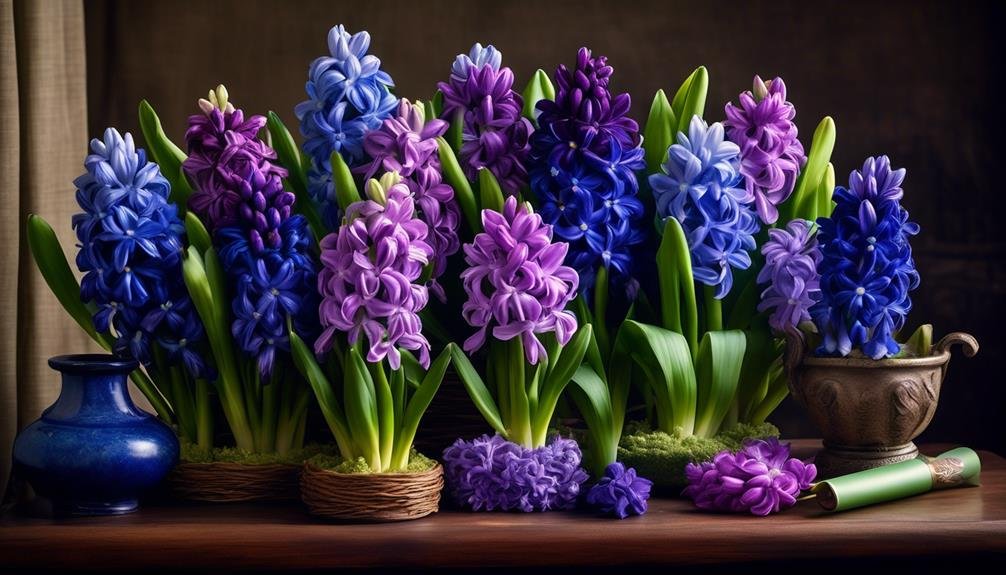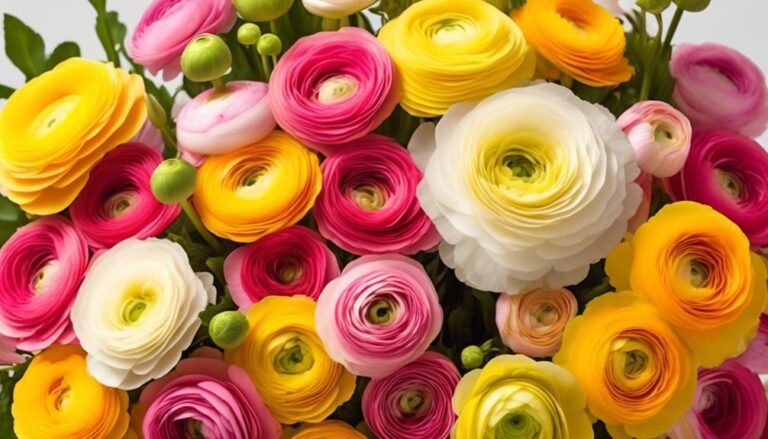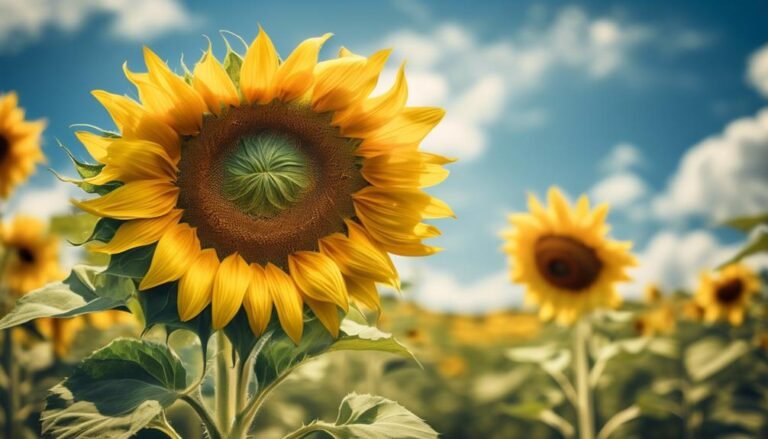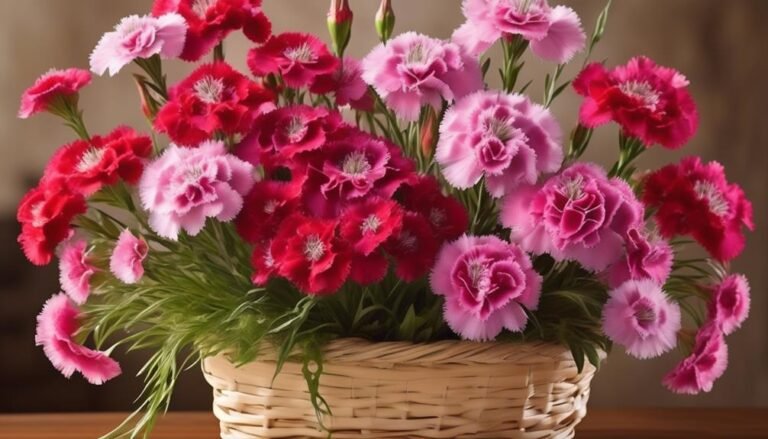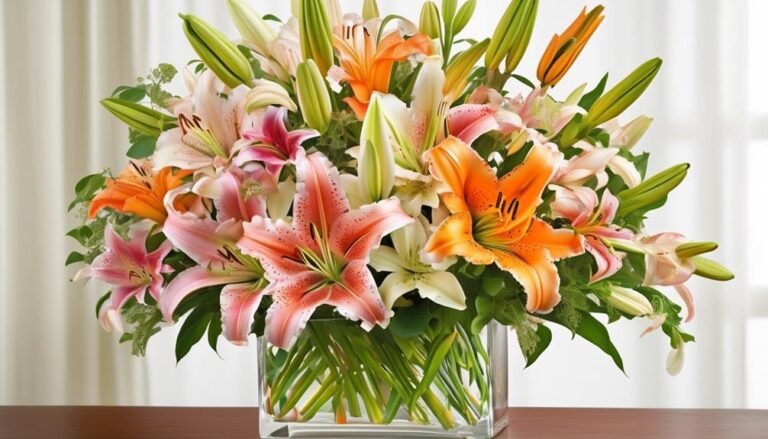Popular Types of Florist Flowers – Hyacinth
Table of Contents
The Hyacinth is a classic choice among popular florist flowers. This perennial bulbous plant, scientifically known as Hyacinthus orientalis, has a rich historical significance and a fascinating physical structure. Its allure lies in a range of captivating colours and an intoxicating fragrance, making it a coveted addition to any floral arrangement. Whether you’re a seasoned horticulturist or just beginning to explore the world of floristry, discovering the nuances of hyacinths will undoubtedly pique your interest in these elegant blooms.
Hyacinth’s Historical Significance:
- The hyacinth has been cultivated for centuries and holds symbolic value in various cultures.
- It is associated with traits such as sport, play, and forgiveness in Greek mythology.
Physical Structure and Characteristics:
- The plant is characterized by its dense, elongated clusters of highly fragrant, tubular flowers.
- Hyacinths come in a variety of colours, including white, pink, purple, blue, and yellow.
Cultivation and Care:
- Hyacinths thrive in well-drained soil and prefer full sun to partial shade.
- They are typically planted in the fall for spring blooms and require minimal maintenance.
Fragrance and Uses in Floral Arrangements:
- The intoxicating fragrance of hyacinths makes them popular in perfumery and aromatherapy.
- In floral arrangements, hyacinths add both visual appeal and a delightful scent.
In conclusion, the hyacinth’s timeless beauty, rich history, and enchanting fragrance make it a beloved choice for florists and gardeners alike. Whether adorning a garden or a vase, hyacinths are sure to captivate with their elegant charm.
Scientific Name
The hyacinth, scientifically known as Hyacinthus orientalis, is a plant from the Asparagaceae family, native to the eastern Mediterranean region. Its rich history and cultural significance date back to ancient times, with a mythological connection to the youth named Hyacinthus in Greek mythology. According to the myth, the hyacinth flower sprouted from the blood of Hyacinthus, who was accidentally killed by the god Apollo, making it a symbol of sport, play, and youthful beauty.
Cultivation of the hyacinth began in Western Europe in the 16th century, and it gained popularity for its vibrant and fragrant blooms. The Dutch Golden Age in the 17th century further contributed to its popularity, leading to the development of numerous cultivars and varieties.
Today, the hyacinth is beloved in many cultures, often associated with springtime and renewal.
Background History
The hyacinth has a rich and captivating history, intertwined with ancient mythology and horticultural significance. In Greek mythology, the hyacinth is associated with the tragic tale of Hyacinth, a young man accidentally killed by a discus thrown by the sun god Apollo. It’s believed that the beautiful hyacinth flowers sprang from the spilled blood of Hyacinth, symbolizing love, sorrow, and the cycle of life and death in ancient Greek beliefs.
Originating in Constantinople in the sixteenth century, the hyacinth has travelled through different cultures and historical periods to become a widely cultivated flower, particularly in Holland. Its enduring significance in modern times is a testament to its mythological origins and cultivation history.
The hyacinth’s symbolism and allure stem from its cultural significance and association with various beliefs, making it a popular choice in floral arrangements.
Physical Description
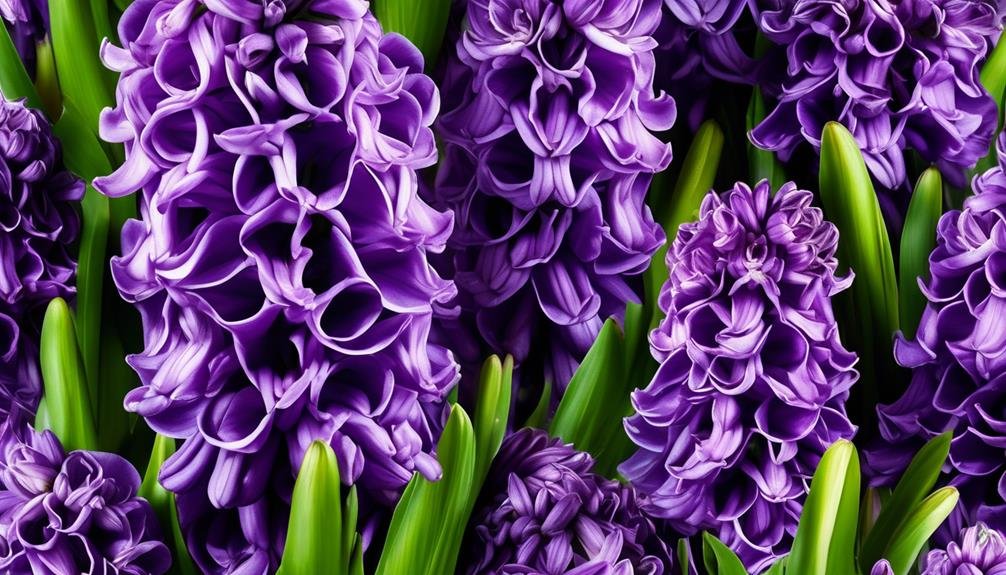
Hyacinths are known for their slender, elongated shape and tightly packed florets, forming a dense floral spike. The individual florets are star-shaped and arranged in a visually appealing and symmetrical cluster. The leaves are long, narrow, and arch gracefully from the base of the flower stem. These physical characteristics make hyacinths popular for floral arrangements, especially in the early months of the year.
The delicate colours of hyacinths, such as Cream Puff, Mademoiselle, Twilight, and Amethyst, give them a cloud-like appearance, making them an ideal choice for spring and Easter celebrations. In the language of flowers, hyacinths symbolize sincerity, constancy, and the beauty of spring. Their sweet fragrance and elegant appearance make them a meaningful addition to bouquets and floral displays, conveying messages of love.
Hyacinths add a touch of elegance and sentiment to any floral composition, whether used in simple, monochrome arrangements or mixed with other spring blooms.
Colours and Characteristics
Hyacinths are a versatile and sought-after choice for floral arrangements due to their captivating array of colours and distinctive characteristics. They come in colours like Cream Puff, Mademoiselle, Twilight, and Amethyst, each with its own unique fragrance.
In ancient Greek mythology, hyacinths were associated with rebirth and linked to Apollo and the god’s grief over the death of his friend, Hyacinthus, symbolizing themes of youth, beauty, and sorrow.
The colour purple, as seen in the Amethyst variety, has historical associations with royalty and luxury, adding a regal touch to floral arrangements. The sweet and intense fragrance of hyacinths has made them popular choices for perfumes and scented products. Additionally, the cloud-like texture of hyacinths creates a soft and delicate appearance in arrangements and bouquets, adding an ethereal quality to any floral display.
Hyacinths have made their mark in art and literature, often symbolizing various emotions and themes. The visually and aromatically diverse nature of hyacinths, combined with their rich cultural significance, makes them an enchanting and meaningful choice for floral arrangements, adding depth and character to any setting.
Varieties Available
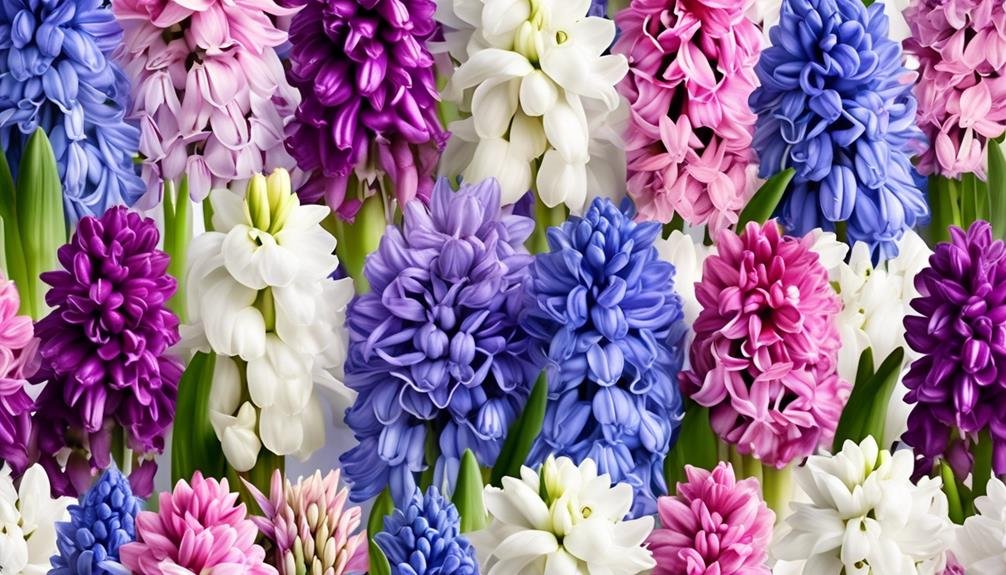
Hyacinths come in a variety of vibrant colours, patterns, and fragrances, making them a versatile choice for floral arrangements. Colours such as pink, blue, white, and purple are available, with single and double-flowered varieties offering different shapes and appearances.
For gardening enthusiasts, ‘Delft Blue‘ and ‘Fondant’ are notable varieties with unique colour combinations and patterns. ‘Woodstock‘ features deep purple blooms, while ‘Carnegie‘ offers pure white flowers for contrast and elegance in garden settings.
Those seeking fragrant blooms can consider ‘City of Haarlem‘ and ‘Anna Marie‘, which not only add visual appeal but also enhance the sensory experience with their delightful fragrance. Mixing different varieties, such as pairing ‘Woodstock‘ with ‘Carnegie‘ for contrast or combining fragrant varieties like ‘City of Haarlem’ and ‘Anna Marie’, can create visually stunning and aromatic displays.
Seasonal Availability
Hyacinths are most abundant in the spring, typically peaking in March and April. However, their availability can be influenced by climate, with milder regions seeing them as early as February. Unpredictable weather patterns can cause variations in availability from year to year.
If hyacinths aren’t available, alternatives like daffodils, tulips, and irises offer vibrant colors and delightful fragrances for spring arrangements. Availability may vary by geographical location and local growing conditions.
While hyacinths are abundant in spring, their availability decreases as the seasons progress, with limited availability in summer and autumn.
Care Tips
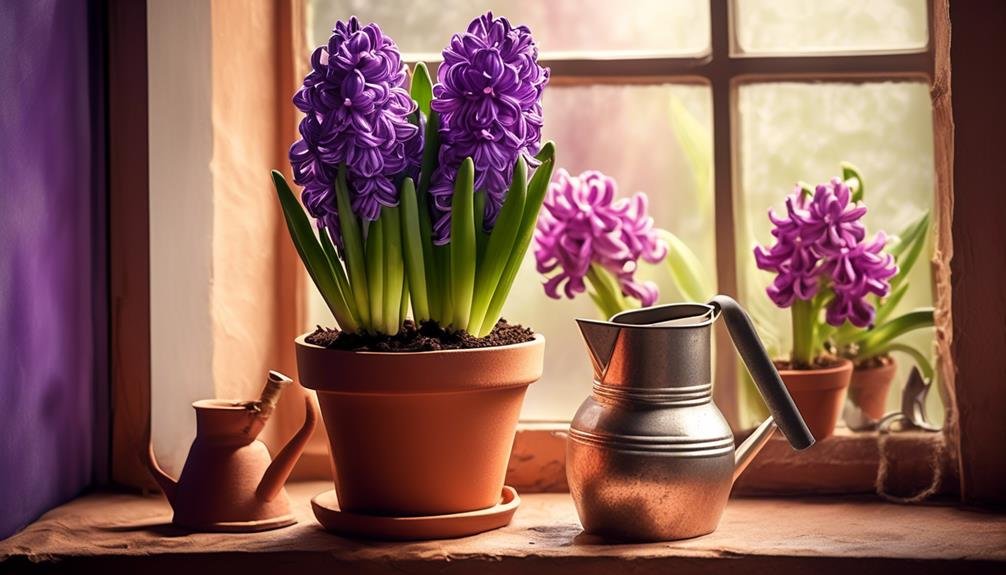
Hyacinths are beautiful spring flowers that require proper care to thrive. Here are essential tips to help you cultivate healthy and vibrant hyacinth blooms:
Planting: Choose a well-drained location and plant bulbs 4-6 inches deep in the fall, allowing them to establish roots before the ground freezes.
Watering: Keep the soil consistently moist, especially during dry spells, but avoid waterlogging to prevent bulb rot.
Maintenance: After blooming, allow the foliage to wither and turn yellow before removing it to help the bulb store energy for the next season.
Bulb Storage: Lift the bulbs after foliage withers and store them in a cool, dry place, inspecting for any signs of disease or damage before storing.
Winter Protection: Cover hyacinth bulbs with mulch in late fall to protect them from extreme cold and frost.
Indoor Arrangements: Cut hyacinths for indoor arrangements just as the buds start to show colour to enjoy their fragrance and beauty indoors while allowing the plant to thrive outdoors.
Following these care tips will help you nurture stunning hyacinth blooms and ensure their longevity and re-flowering in the seasons to come.
What Are the Similarities and Differences Between Hyacinth and Dianthus Flowers?
Hyacinth and dianthus flowers are both beautiful spring blooms, but they do have their differences. Hyacinths have a strong fragrance, while dianthus flowers come in a variety of colors and are known as popular types of dianthus flowers. Both are loved for their vibrant colors and are commonly used in floral arrangements.
Conclusion
Hyacinths are a popular choice for florists due to their sweet fragrance and variety of colours. Their cloud-like texture and seasonal availability make them perfect for creating stunning floral arrangements for spring and Easter celebrations.
Whether purchased as cut flowers or potted bulbs, hyacinths add a feminine and beautiful touch to any display. With proper care, these flowers can bring joy and beauty to any space.
